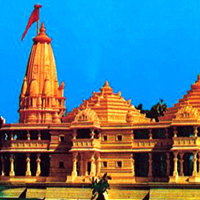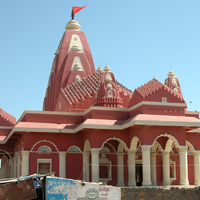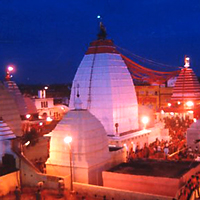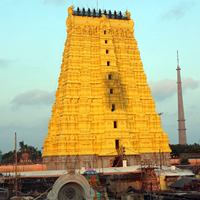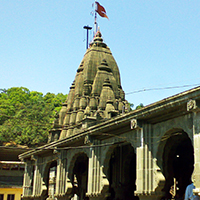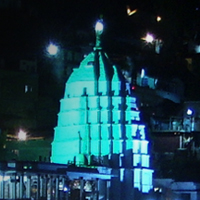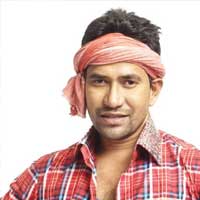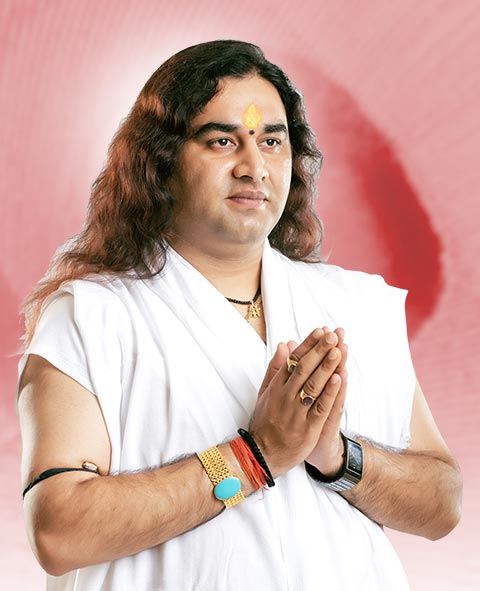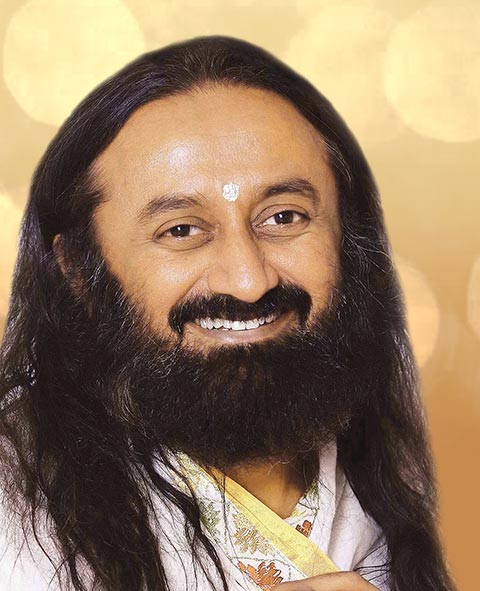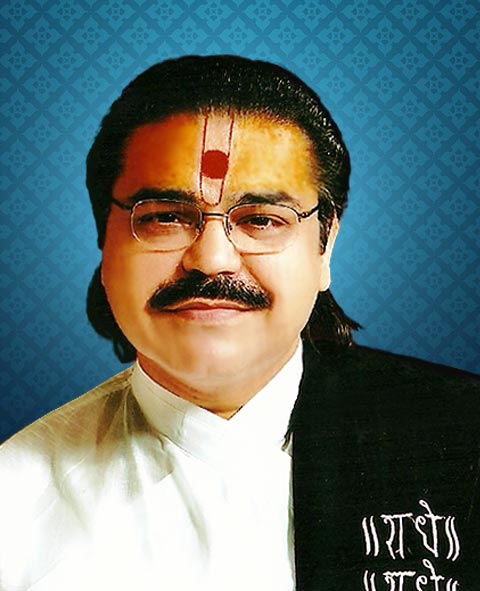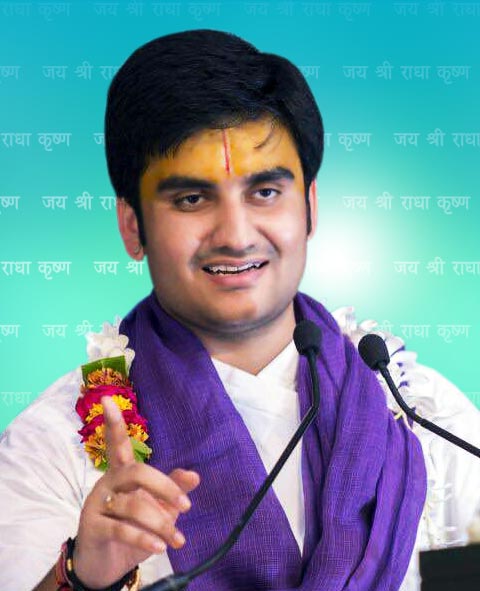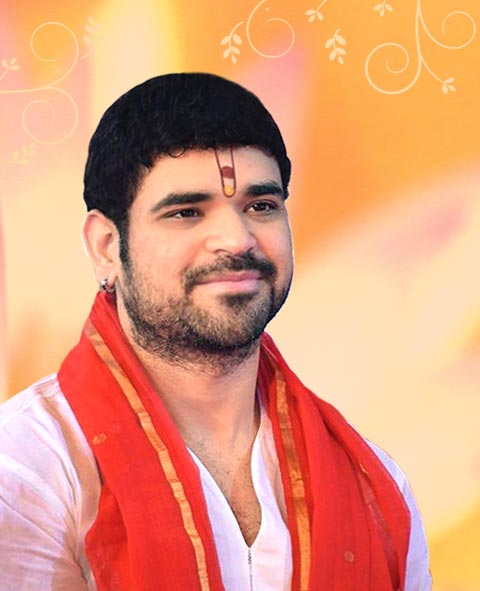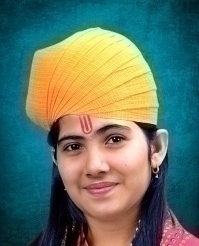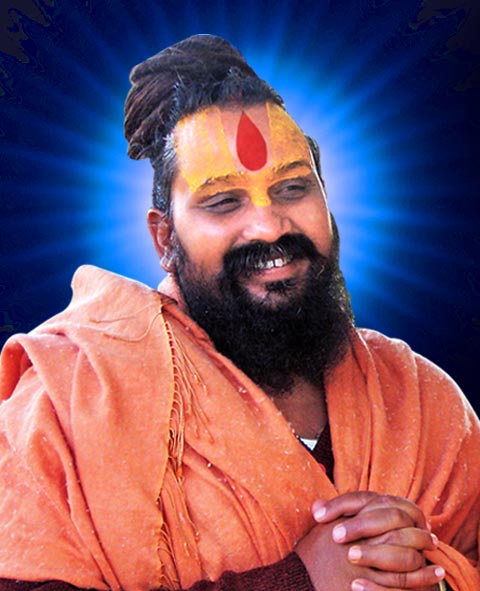Browse By Tample

Dwarkadhish Temple Gujarat
The Dwarkadhish temple, also known as the Jagat Mandir and occasionally spelled Dwarakadheesh is a Hindu temple dedicated to the god Krishna, who is worshiped here by the name Dwarkadhish, or 'King of Dwarka'. The temple is located at Dwarka, Gujarat, India. The main shrine of the 5-storied building, supported by 72 pillars, is known as Jagat Mandir or Nija Mandir, archaeological findings suggest it to be 2,200 - 2,000 years old. Temple was enlarged in the 15th- 16th century. The Dwarkadhish Temple is a Pushtimarg temple, hence it follows the guidelines and rituals created by Vallabhacharya and Vitheleshnath.
According to tradition, the original temple was believed to have been built by Krishna's grandson, Vajranabha, over the hari-griha (Lord Krishna's residential place). The temple became part of the Char Dham pilgrimage considered sacred by Hindus in India, after Adi Shankaracharya, the 8th century Hindu theologian and philosopher, visited the shrine. The other three being comprising Shringeri, Badrikashram and Puri. Even today a memorial within the temple is dedicated to his visit. Dwarakadheesh is the 108th Divya Desam of Vishnu on the subcontinent, glorified in the Divya Prabandha sacred texts.
Legend
As per Hindu legend, Dwarka was built on a piece of land by Krishna that was reclaimed from the sea. Sage Durvasa once visited Krishna and his wife Rukmini. The sage wished that the pair took him to their palace. The pair readily agreed and started walking with the sage to their palace. After some distance, Rukmini got tired and she requested some water from Krishna. Krishna dug a mythical hole that brought in river Ganga to the place. Sage Durvasa was furious and cursed Rukmini to remain in the place. The temple where Rukmini's shrine is found, is believed to the place where she stood.

History
The town of Dwarka in Gujarat has a history that dates back centuries, and mentioned in the Mahabharat epic as the Dwaraka Kingdom. Situated on the banks of river Gomti, the town is described in legend as the capital of Lord Krishna. Evidence such as a stone block with script, the way the stones were dressed showing that dowels had been used, and an examination of anchors found on the site suggest that the harbour site dates only to historical times, with some of the underwater structure being late Medieval. Coastal erosion was probably the cause of the destruction of what was an ancient port.
Hindus believe that the original temple was constructed by Vajranabh, the great grand son of Krishna, over the residential palace of Krishna.
The current temple in Chaulukya style is constructed in 15-16th century. The temple covers area of 27 metre by 21 metre with east-west length of 29 metre and north-south width of 23 metres. The tallest peak of the temple is 51.8 m high.
Religious importance
The flag atop the temple shows the sun and moon, which is believed to indicate that Krishna would be there till Sun and moon exist on earth. The flag is changed from 5 times a day, but the symbol remains the same. The temple has a five-story structure built on seventy-two pillars. The temple spire is 78.3m high.The temple is constructed of limestone which is still in pristine condition. The temple shows intricate sculptural detailing done by successions of dynasties that ruled the region. The structure was not expanded much by these works. There are two entrances to the temple. The main entrance (north entrance) is called "Moksha Dwara" (Door to Salvation). This entrance takes one to the main market. The south entrance is called "Swarga Dwara" (Gate to Heaven). Outside this doorway are 56 steps that leads to the Gomati River. The temple is open from 6.00 am to 1.00 pm and 5.00 pm to 9.30 pm. The Krishnajenmastami festival, the birthday of Krishna was commissioned by Vallaba (1473-1531).
Dwarka Nagari - Little History
According to Hindu tradition still extant, the earliest known conqueror of Okhamandal was Shri Krishna, called also Ranchodji, the eight incaranation of Vishnu, Who after his seventeenth battle with Jara Sangh, king of Magadh Desh, fled from Mathura, and eventually arrived with his army at Okhamandal which he subjected after a hard struggle with the Kalas. Shri Krishna established his capital at Dwarka on the bank of the Gomti Creek.
Krishna was succeeded by the great grandson of Vajranabh, who enjoys the saintly reputation of having built the present temple Dwarkanath, called also Trilok sundar, signifying 'the handsomest of the three world' Many Hindus religiously believe that the temple was erected in one night by supernatural agency, under Vajranabh's direction.
Certain it is that whole of western and south-western Saurashtra, now included in a Jamnagar and Junaghadh districts was colonized by the Yadavas, whose most important leader was Shri Krishna. The Yadavas ruled and when they perished in a family quarrel under the influence of drink, and after Shri Krishna's death Dwarka submerged under the sea. In this region the original in habitants are said to Kabas, Modas and Kalas, The Kabas and Modas now seem to be extinct but the present day Vaghers are said to have descended from the Kabas.
The Kalas re-conquered Okhamandal in the 2nd Century A.D next a Syrian Sukkur Belium conquered this region and during this time Dwarka submerged by the sea. He was driven out by another Syrian named Mehem Guduka. Again Kalas now know as Vaghers.
It was 13th century when the Rathods came and took advantage of the Herule-chavada quarrels. The few surviving chavadas and Herules were absorbed by the Vaghers. Veravalji, the Rathod now became the sole ruler of Okhamandal. During the periods of Bhimji, Mahmud Begada who was sultan of Gujarat, conquered Okhamandal destroying the temple at Dwarka. Later the Vaghers drove out the Muslim.

The history of Okhamandal upto 1800 seems to be uneventful but since this date, until their final extermination or submission the Vadhelas and Vaghers came up repetedly against to the British and the Gaikwads.
Krishna become Dwarkadhish
The story how Shri Krishna became famous as Dwarkadhish is very interesting and also a benchmark to the rulers. Though he was the king he ruled democratically. Jarasangha, father in law of Kansa, attacked Matura on seventeen different occasions and on each occasion under the leadership of Shri Krishna the people of Mathura bravely repulsed the attack. Krishna realized that the real strength of Jarasangha was his reliance on Hans and Dhimak who were on Jarasandha's side. So with a great deal of foresight, Shri Krishna cleverly got Hansa and Dhimak killed. This was the policy of war. Shri Krishna had to fight the large majority of people who were materialistic and evil- minded. Jarasangha was frightened after the death of Hansa and Dhimak, and his army lost confidence.
Jarasangha, with great efforts once again built up his army and invaded Mathura for the 18th time. On this occasion Vikadru, a member of the Yadav assembly spoke the bitter truth, He said,' Krishna, we have limitless love for you. We cannot compensate for your obligations on us. Yet these invasions are because of you. The civic life of Mathura is completely disrupted. Commerce and trade have been ruined. The people are not able to attend to agricultural duties and as a result the progress is hindered. And on the top of all, the danger of one more invasion of Jarasangha is hanging over Mathura. Hence in these circumstances, for the good of the people I request you to leave us. It is bitter but it is the truth. Please consider, Shri Krishna your followers are not sentimental. They cannot remain sentimental because of your teaching. Therefore, I as your devotee tell you the truth without fear. The entire assembly was stunned and silent. Shri Krishna's father Vasudev supported Vikrendu in assembly.
Shri Krishna realized that the republic had to face many dangers because of him. And decided to leave Mathura. Thus he proved that he not only advised but also lived accordingly.
He advised Yadavas,' I have taught you true culture. Live according to the ideals and impart these teachings to others. I will leave Matura and go to Dwarka, in Saurashtra..
Thereafter Shri Krishna crossed Gomantak (Girnar Mountain) went to Saurashtra, where he built Dwarka City (City of Gold) at a distance of 20 miles from Prabhas Patan.(today's Veraval Somanath). Shri Krishna appeared to have settled in Dwarka, though his mind was engaged in re-establishing a kingdom based on the principal of true religion. This was his life's goal. And he made Dwarka , the empire which is based on the principal of true religion, called Dharma Rajya in true sense.Where he become known as the ruler of Dwarka ,'Shri Dwarkadhish.'
The importance of Shri Krishna's life and teachings was not limited to his contemporary period but is equally so to the posterity. That is why his birthday is remembered and celebrated today even after five thousand years. Not only vaishnavas (followers of vishnu - ÃShri Krishna) but also all those who are interested in his philosophy celebrate his birthday with great devotion. The philosophy of his life has stood the test of time.
Appearance of Dhwajaji of Dwarkadhish is unique. It has got It's own characteristic. This appearance classified into three kinds:
(1) Aadhi Bhoutik:
Aadhi means place and Bhautik means Panch tatva woven cloth of dhwaja. 52 yards of cloth is being used for dhwaja and fifty-two nos. of small flags are being joined around border of fifty-two yards of dhwaja in which each yard ties in own independent existence & identity. Each yard indicates entrance of Dwarka of Krishna era and it also symbolises flags on the residence of fifty-two officers of Dwarka.
All these fifty-two yards combine to single dhwaja. These yards also symbolise fifty entrances as well as Swarg Dwar & Moksha Dwar of Dwarkadhish palace. Thus dhwaja of Dwarkadhish is combining Aadhi Bhoutik swaroop of entrances & residence of yadav officers.
(2) Adhyatmik:
Word dhwaja is quite auspicious & honorable word, which creates sense of respect in the mind of person who hears it. Other name of dhwaja is zanda (Flag), just as national flag is national symbol two which every Indian respects & consider his duty to respect & consider it's disrespect as disrespect to nation, like wise due respect is given to Dhwajaji. People respect its Adhyatmik swarup, and bow to dhwaja as mark of devotion & respect.
(3) Aadhidaivik Swarup:
Just as tricolor Ashok Chakra national flag of India explain divine nature of flag like wise fifty-two yards. Dhwajaji of Dwarkadhish indicates it's divine nature. When each yard of cloth. But when it is tailored to dhwaja it incarnate divine nature and it becomes abode of Dwarkadhish swaroop till this divine in canted dhwaja is not hosted, god Dwarkadhish resides at the residence of its devotee and makes it's residence & it is family members auspicious.

Why is it 52 Yard Long?
Devotees of dwarka, after taking bath in to gomti ganga, strides chhapanpi sidi, ented into swarg dwar & take darshans of Dwarkadhish & look at tomb & dhwajaji & engross into deep thinking & experience immense sense of exclamatory questions.
Sea submerged dwarika but it could not submerge residence of shreeji. This residence it presents sherrji mandir. A present place of dwarika depicts history of dwarika of shri krishna era. Measurement of dhwajaji also depicts historical meaning to present generation. Generally everyone knows that measurement of dhwaja describing place of one individual is one yard. Then why length of dhwajaji of shriji is 52 yards?
In the dwarika of krishna era administration was run by 56 koti yadavs. Here koti do not mean crores but indicates fifty-six divisions of administration. Out of fifty six administrators' balram, shri krishna, pradhumna & anirudhji are incar nation of god. Which is also known as chatur vyuha. Devotee to day also pray this chaturvyuha in their individual temples and today also dhwaja is flurrying over their temple. This chaturvyuh is considered as donor of purushartha, dharma, aarth, kama & Moksha of human life. When these four are deducted from fifty six-koti balance fifty-two koti indicates residence of yadav administrators of fifty-two divisions. Which were present in dwarika of krishna era but to day they are not in existance but fifty two yards shriji dhwaja is nothing but remem brance & combine symbol of fifty two dhwaja of different yadav koti tailored together & named as shriji dhwaja. Climbing of fifty-six steps for darjhaba of shriji swaroop reminds us about existence of fifty-six koti. Which reminds us that glimpse of dwarkadhish is not easy devotee has to pass through these fifty-six administrators first to qualify them for darshana.
Darshana done after qualifications devotee feel himself proud & shri dwarkadhish also looking after his welfare. Symbol of sun & moon depicted in bhriji dhwaja indicates individual incarnation of shriji. Administration work of dwarka was entrusted to group of is yadavs each from different sect of yadavas wise bhoj, vrishni, andhak & atwah, dasharha. Dhwaja indicating symbol of their work of administration was flurrying on their residence. Lord Krishna himself was closely inspecting it from his palace. These fifty two Administrators were to look, after defense, education, Rinnai, welfare, entertainment, religion etc. just to giue us an idea of the then dwarika which is not accessible to us, measurement of dhwaja has been kept 52 yards. Additionally devotee feel themselves satisfied by glimpse of chaturvyuh swarup of Balram Krishna, Pradumna, Annirudhji depicted as sun & moon in dhwajaji & considered themselves lucky for their desire to onflur 52 yards dhwajaji & after glimpse of their flurrying dhwaja of temple.
Additionally it is stated in hari vansh that 50 doors were arranged for entrance & exits into dwarka & on each door symbolic dhwaja be used to unflur. besides these 50 doors. There were two extra doors for entrance & exit into personal abode of shriji bhagvan which were named as swarga dwar & moksha dwar. Which are worth looking even present day also. Thus combination of 52 dhwaja is dhwajai of shriji.
Importance of Dhwajaji
People have due importance of dhwaja and it is honour is also quite important dhwajai has several names like dhwaja, zanda, ketu, vavto etc. Dhwaja is being flurred at temples. Zanda of flag is being hoisted at social or political places. Ketu is being used used in vehicles like chariot. Vavta is being used to benote some sign or for function purpose. Thus dhwaja is religious, plous & pray-worthy thing. Flag is honourable symbol for recognition of nation, state or institution. Thus it is being used for recognition if country Ecc Tricolour with Ashok chakra flag is recognition of India. Like wise dhwaja is recognition of temple.
Importance of dhwaja of dwarikadhish indicnies several acts. Dwarka is being considered as one of the seven-moksh davini centres of India. Since hari-Vishnu-purshatamma resides at dwarka who relives mankinds form karma bandhana and make them free of all worries. Lord krishna has said in
Gita:
When devotee deside to change multi facet dhwaja on dome of dwarikadhish temple. He invites his friends, relatives & well wishers. Afterwards he and his invitees carry dhwajaji on their heads & proceeds to dwarkadhish temple chantince slogrm of Jay Ranchhod - Raja Ranchhod, Gopal Krishna - Radha Krishna where poojan if dhwajaji is carreed out by shashtrokta Poojan Throggh learned brahmin.
First of all brahmin apply tilaks to every one present on poohan chanting iswasti na indro......justo stabilize their mind. Devotees feel themselves plous by this act. Then after yajman has to do poojan of dhwajaji by chanting slokas. In this firstly ganpatiji poojan is carried out with vigheshvaray varday - slolas. Then after kalash pujan is carried out. Then all gods are prayed by flowers & rice. Thereafter guru pujan & kuldevi poojan is carried out. After completion of this poojans, dhwajaji poojan is carried out with the help of learned brahimns by means of dhyanahuanam & shodshopachar, on completion of this poojan brahmins are felicitated thus after poojan dhwajaji is kept at plous feet of dwarikadhish with gifts and then it is handed over to brahmin for flurring on the mast of dome. This brahmin climb at the top of dome and onflur dhwajaji and then throw coconut from dome to beneath this indicates completion of dhwaja poojan. Significance of different colors in dhwajaji :
Means:
Significance of Colors
Since body of lord krishna is meghshyam & glittering like rainbow the colour of dhwajaji is also saptarangi like rainbow. These red, green, yellow, blue, white, pink and saffron colours of dhwajaji have significance.
RED :
It is used for good occasions. It indicate bravery, It becomes source of inspiration to person who is getting one dhwaja flurrying cere in only.
GREEN :
It is symbol of peace & progress entire universe is spreaded by green colour in mountains, fields, garden in form of trees, leaves, crop etc. It has capacity to increase mental strength of human being. Ancient rushis were living in ashrams surrounded by greenery for that reason only.
YELLOW :
It is symbol of knowledge. It also symbolises integrity & prompt human being for more knowledge. Yellow pitamber of lord Vishnu symbolise his immense knowledge, lord Krishna & lord Ganpati also wear yellow pitamber. Both remove poverty of their devotee & glue them prosperity hence both are worshiped.
BLUE :
It is symbol of strength. Almighty has sparingly spreaded blue sky above us & blue sea beneath us bhagvan vishnu & goddess laxmi resides in sea bath in ganga & yamuna is considered most plous it further indicates inner strength of person who can cotrol his desire & organs effectively. Balramji was having this quality.
WHITE :
It symbolise, peace, piousness & cleanliness. It is formed by mixing seven colours. It indicates cleanliness of mental & physical state. It prompt mankind to get relieve from xiarrown thinking goddess of knowledge wears clean white cloths.
SAFFRON :
It symbolise bravery. When there is increase of dishonesty, mal practice & injustice, this color prompt to fight against it.
PINK :
It symbolises joyfulness. Example is rose flower, Rose flower remains between thorns it shows that mankind shoud keep their life delicate like rose but should also take thron like tough ness when occasion demand.
